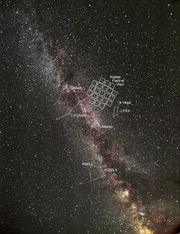Kepler Mission
 |
|
| General information | |
|---|---|
| NSSDC ID | 2009-011A |
| Organization | NASA |
| Major contractors | Ball Aerospace & Technologies Corp. |
| Launch date | 2009-03-07, 03:49:57.465 UTC[1] |
| Launched from | Space Launch Complex 17-B Cape Canaveral Air Force Station |
| Launch vehicle | Delta II (7925-10L) |
| Mission length | ≥ 3.5 years elapsed: 1 year, 11 months, and 7 days |
| Mass | 1,039 kg (2,290 lb) |
| Type of orbit | Earth-trailing heliocentric |
| Orbit height | 1 AU |
| Orbit period | 372.5 days |
| Wavelength | 400–865 nm [2] |
| Diameter | 0.95 m (3.1 ft) |
| Collecting area | 0.708 m2 [3] |
| Website | kepler.nasa.gov |
The Kepler Mission is a NASA space observatory designed to discover Earth-like planets orbiting other stars.[4] The spacecraft was launched on March 7, 2009.[5][6] The mission is named in honor of German astronomer Johannes Kepler.[7] With a planned mission lifetime of at least 3.5 years, Kepler uses a photometer developed by NASA to continuously monitor the brightness of over 145,000[8] main sequence stars in a fixed field of view. The data collected from these observations will be analyzed to detect periodic fluctuations that indicate the presence of extrasolar planets (planets outside our solar system) that are in the process of crossing the face of other stars. Kepler is a mission under NASA's Discovery Program of low-cost, focused science missions. NASA's Ames Research Center is the home organization of the science principal investigator and is responsible for the ground system development, mission operations and science data analysis. Kepler mission development was managed by NASA's Jet Propulsion Laboratory until December 2009 but was then transferred to NASA Ames Research Center. Ball Aerospace & Technologies Corp. was responsible for developing the Kepler flight system.
The Kepler Mission is currently in active operation, with the first main results announced on 4 January 2010. As expected, the initial discoveries were all short-period planets, with longer period planets expected later. The first six weeks of data revealed five previously unknown planets, all very close to their stars[9][10]. Among the notable results are one of the least dense planets yet found[11], and two low-mass white dwarf stars[12] that were initially reported as being members of a new class of stellar objects.[13]
Contents |
Objectives and methods
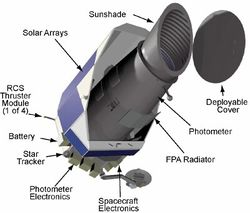
The scientific objective of the Kepler Mission is to explore the structure and diversity of planetary systems.[14] This is achieved by surveying a large sample of stars to achieve several goals:
- Determine how many Earth-sized and larger planets there are in or near the habitable zone (often called "Goldilocks planets")[15] of a wide variety of spectral types of stars.
- Determine the range of size and shape of the orbits of these planets.
- Estimate how many planets there are in multiple-star systems.
- Determine the range of orbit size, brightness, size, mass and density of short-period giant planets.
- Identify additional members of each discovered planetary system using other techniques.
- Determine the properties of those stars that harbor planetary systems.
Most of the extrasolar planets detected so far by other projects are giant planets, mostly the size of Jupiter and bigger. Kepler is designed to look for planets 30 to 600 times less massive, closer to the order of Earth's mass (Jupiter is 318 times more massive than Earth). The method used, the transit method, involves observing repeated transit of planets in front of their stars, which causes a slight reduction in the star's apparent magnitude, on the order of 0.01% for an Earth-sized planet. The degree of this reduction in brightness can be used to deduce the diameter of the planet, and the interval between transits can be used to deduce the planet's orbital period, from which estimates of its orbital semi-major axis (using Kepler's laws) and its temperature (using models of stellar radiation) can be calculated.
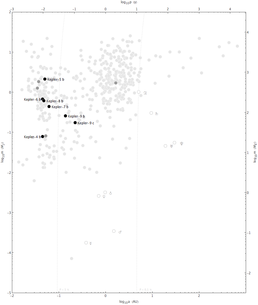
The probability of a random planetary orbit being along the line-of-sight to a star is the diameter of the star divided by the diameter of the orbit.[16] For an Earth-like planet at 1 AU transiting a Sol-like star the probability is 0.465%, or about 1 in 215. At 0.72 AU (the orbital distance of Venus) the probability is slightly larger, at 0.65%; such planets could be Earth-like if the host star is a late G-type star such as Tau Ceti. In addition, because planets in a given system tend to orbit in similar planes, the possibility of multiple detections around a single star is actually rather high. For instance, if an alien Kepler-like mission observed Earth transiting the Sun, there is a 12% chance of also seeing Venus transit.
The Kepler Mission has a much higher probability of detecting Earth-like planets than the Hubble Space Telescope, since it has a much larger field of view (approximately 10 degrees square), and is dedicated to detecting planetary transits. The Hubble Space Telescope, in contrast, is used to address a wide range of questions and rarely looks continuously at just one starfield. Of the approximately half million stars in Kepler's field of view, around 150,000 stars were selected[17] for observation and they are observed simultaneously, measuring variations in their brightness every 30 minutes. This provides a better chance for seeing a transit. In addition, the 1-in-215 probability means that if 100% of stars observed had the same diameter as the Sun, and each had one Earth-like terrestrial planet in an orbit identical to that of the Earth, Kepler would find about 465; but if only 10% of stars observed were such, then it would find about 46. The mission is well suited to determine the frequency of Earth-like planets orbiting other stars.[18][19]
Since Kepler must see at least three transits to be sure the dimming was caused by a planet, and since larger planets give a signal that is easier to check, scientists expect the first reported results will be larger Jupiter sized planets in tight orbits. The first of these were reported after only a few months of operation. Smaller planets, and planets further from their sun will take longer, and discovering planets comparable to Earth is expected to take three years or longer.[20]
Data from the mission is also being used for studying variable stars of various types and performing asteroseismology[21], particularly on stars showing solar-like oscillations.[22]
Kepler Input Catalog
The Kepler Input Catalog (or KIC) is a publicly searchable database of the roughly 13.2 million targets under study by the Kepler Mission.[23][24]
Status

In January 2006, the project was delayed eight months because of budget cuts and consolidation at NASA.[25] It was delayed again by four months in March 2006 due to fiscal problems.[25] At this time the high-gain antenna was changed from a gimballed design to one fixed to the frame of the spacecraft to reduce cost and complexity, at the cost of one observation day per month.[25]
The observatory was launched on March 7, 2009 at 03:49:57 UTC (March 6, 10:49:57 p.m. EST) aboard a Delta II rocket from Cape Canaveral Air Force Station, Florida.[1][5] The launch was a complete success and all three stages were completed by 04:55 UTC. The cover of the telescope was jettisoned on April 7, 2009 and the first light images were taken on the next day.[26][27]
On April 20, 2009 it was announced that the Kepler science team had concluded that further refinement of the focus would dramatically increase the scientific return.[28] On April 23, 2009 it was announced that the focus had been successfully optimized by moving the primary mirror 40 micrometers (1.6 thousandths of an inch) towards the focal plane and tilting the primary mirror 0.0072 degree.[29] On May 12, 2009 at 5:01 p.m. Pacific Time (17:01 UTC-8) Kepler successfully completed its commissioning phase and began its search for planets around other stars.[30][31]
On June 19, 2009, the spacecraft successfully sent its first science data to Earth. It was discovered that Kepler had entered safe mode on June 15. A second safe mode event occurred on July 2. In both cases the event was triggered by a processor reset. The spacecraft resumed normal operation on July 3 and the science data collected since June 19 was downlinked that day.[32] On October 14, 2009, the cause of these safing events was determined to be a low voltage power supply which provides power to the RAD750 processor.[33] On January 12, 2010, one portion of the focal plane transmitted anomalous data, suggesting a problem with focal plane MOD-3 module, covering 2 out of Kepler's 42 CCDs. As of Feb. 18, 2010, MOD-3 remains offline.[34][35]
Kepler downloads roughly 90-100 gigabits of science data[36] about once per month[37] - the latest such download was on 20 May 2010.[38]
Once Kepler has detected a transit-like signature, it is necessary to rule out false positives with follow-up tests[39] such as doppler spectroscopy. Although Kepler was designed for photometry it turns out that it is capable of astrometry and such measurements can help confirm or rule out planet candidates.[40]
Mission results to date
NASA held a press conference to discuss early science results of the Kepler Mission on August 6, 2009.[41] At this press conference, it was revealed that Kepler has confirmed the existence of the previously-known transiting exoplanet HAT-P-7b, and is functioning well enough to discover Earth-size planets.[42][43]
Since Kepler's detection of planets depends on seeing very small changes in brightness, stars that vary in brightness all by themselves (variable stars) are not useful in this search.[37] From the first few months of data, Kepler scientists have determined that about 7500 stars from the initial target list are such variable stars. These were dropped from the target list, and will be replaced by new candidates. On November 4, 2009, the Kepler project publicly released the light curves of the dropped stars.[44]
Ground-based follow-up studies of the first six weeks of data, reveal five previously unknown planets, all very close to their stars, one (Kepler-4b) slightly larger than Neptune and four (Kepler-5b, 6b, 7b, and 8b) larger than Jupiter[9], including one (Kepler-7b), that is one of the least dense planets found yet.[11] Another discovery, not yet understood, are at least two objects that are the size of planets, but hotter than their stars.[13] One analysis suggests these objects are white dwarfs.[45]
From the paper "Characteristics of Kepler Planetary Candidates Based on the First Data Set: The Majority are Found to be Neptune-Size and Smaller": "On 15 June 2010 the Kepler Mission released data on all but 400 of the ~156,000 planetary target stars to the public. At the time of this publication, 706 targets from this first data set have viable exoplanet candidates with sizes as small as that of the Earth to larger than that of Jupiter. Here we give the identity and characteristics of 306 of the 706 targets. The released targets include 5 candidate multi-planet systems. Data for the remaining 400 targets with planetary candidates will be released in February 2011. The Kepler results based on the candidates in the released list imply that most candidate planets have radii less than half that of Jupiter", "The Kepler results imply that small candidate planets with periods less than 30 days are much more common than large candidate planets with periods less than 30 days and that the ground-based discoveries are sampling the large-size tail of the size distribution."[46] This contradicts older theories which had suggested small and Earth-like planets would be relatively infrequent. Based on Kepler data, an estimate of around 100 million habitable planets in our galaxy may be realistic.[47] However, some media reports of the TED talk have led to misunderstandings, apparently partly due to confusion concerning the term "Earth-like". By way of clarification, a letter to the Director of the NASA Ames Research Center, for the Kepler Science Council dated August 2, 2010 states, "Analysis of the current Kepler data does not support the assertion that Kepler has found any Earth-like planets."[48] "
Paper on multi-planet system candidates: "Five Kepler target stars that show multiple transiting exoplanet candidates"[49]
Also published was:"Kepler Eclipsing Binary Stars. I. Catalog and Principal Characterization of 1832 Eclipsing Binaries in the First Data Release"[50]
Mission details
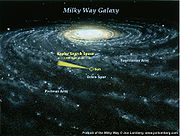
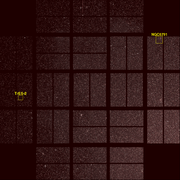
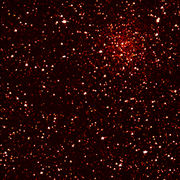
Kepler is not in an Earth orbit but in an Earth-trailing solar orbit[20][51] so that Earth does not occlude the stars which are observed continuously and the photometer is not influenced by stray light from Earth. This orbit avoids gravitational perturbations and torques inherent in an Earth orbit, allowing for a more stable viewing platform. The photometer points to a field in the northern constellations of Cygnus, Lyra and Draco, which is well out of the ecliptic plane, so that sunlight never enters the photometer as the spacecraft orbits the Sun. Cygnus is also a good choice to observe because it will never be obscured by Kuiper belt objects or the asteroid belt.[19]
An additional benefit of that choice is that Kepler is pointing in the direction of the Solar System's motion around the center of the galaxy. Thus, the stars which are observed by Kepler are roughly the same distance from the galaxy center as the Solar System, and also close to the galactic plane. This fact is important if position in the galaxy is related to habitability, as suggested by the Rare Earth hypothesis.
The spacecraft has a mass of 1,039 kilograms (2,290 lb), has a 0.95-meter (37.4 in) aperture, and a 1.4-meter (55 in) primary mirror (the largest on any telescope outside of Earth orbit).[52] The spacecraft has a 105 deg² (about 12 degree diameter) field of view (FOV), roughly equivalent to the size of one's fist held at arm's length. The photometer has a soft focus to provide excellent photometry, rather than sharp images. The combined differential photometric precision (CDPP) for a m(V)=12 solar-like star for a 6.5 hour integration will be 20 ppm, including an expected stellar variability of 10 ppm. An Earth-like transit produces a brightness change of 84 ppm and lasts for 13 hours when it crosses the center of the star. The focal plane is made up of 42 CCDs at 2200 × 1024 pixels which makes it the largest camera launched into space with a resolution of 95 megapixels.[53][54] The array is cooled by heat pipes connected to an external radiator.[19] The CCDs are read out every six seconds (to limit saturation) and co-added on board for 30 minutes. However, even though at launch Kepler had the highest data rate of any NASA mission, the 30 minute sums of all 95 million pixels are more data than can be stored and sent back to Earth. Therefore the science team has pre-selected the relevant pixels associated with each star of interest, amounting to about 5 percent of the pixels. The data from these pixels is then requantized, compressed and stored, along with other auxiliary data, in the on-board 16 gigabyte solid-state recorder. Data that is stored and downlinked includes science stars, p-mode stars, smear, black level, background and full field-of-view images.[19]
The mission's life-cycle cost is estimated at US$600 million, including funding for 3.5 years of operation.[19]
Mission operations
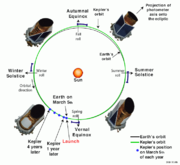
The Kepler mission is operated out of Boulder, Colorado, by the Laboratory for Atmospheric and Space Physics (LASP). The solar array will be rotated to face the Sun at the solstices and equinoxes. These rotations will be used to optimize the amount of sunlight falling on the solar array and to keep the heat radiator pointing towards deep space.[19] Together, LASP and Ball Aerospace & Technologies Corp. (who are responsible for building the spacecraft and instrument) control the spacecraft from the mission operations center located on the research campus of the University of Colorado. LASP performs essential mission planning and the initial collection and distribution of the science data.
NASA contacts the spacecraft using the X band communication link twice a week for command and status updates. Scientific data are downloaded once a month using the Ka band link at a maximum data transfer rate of 4.33 Mb/s. The Kepler spacecraft conducts its own partial analysis on board and only transmits scientific data deemed necessary to the mission in order to conserve bandwidth.[55]
Science data telemetry collected during mission operations at LASP is sent on for processing at the Kepler Data Management Center (DMC), located at the Space Telescope Science Institute on the campus of The Johns Hopkins University in Baltimore, Maryland. The science data telemetry is decoded and processed into uncalibrated FITS-format science data products by the DMC, which are then passed along to the Science Operations Center (SOC) at NASA Ames Research Center, for calibration and final processing. The SOC at NASA Ames Research Center (ARC) develops and operates the tools needed to process scientific data for use by the Kepler Science Office (SO). Accordingly, the SOC develops the pipeline data processing software based on scientific algorithms developed by the SO. During operations, the SOC (1) receives calibrated pixel data from the DMC, (2) applies the analysis algorithms to produce light curves for each star, (3) performs transit searches for detection of planets (threshold-crossing events, or TCEs) and (4) performs data validation of candidate planets by evaluating various data products for consistency as a way to eliminate false positive detections. The SOC also evaluates the photometric performance on an on-going basis and provides the performance metrics to the SO and Mission Management Office. Finally, the SOC develops and maintains the project’s scientific databases, including catalogs and processed data. The SOC finally returns calibrated data products and scientific results back to the DMC for long-term archiving, and distribution to astronomers around the world through the Multimission Archive at STScI (MAST).
Known extrasolar planets in Kepler's field of view
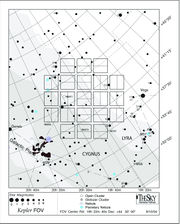
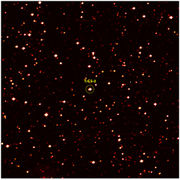
The image, shown to the right, is magnified detail from the full field of view image shown above. This image also identifies the TrES-2b system and clearly shows the parent binary star, GSC 03549-02811, in the constellation Draco.
Kepler has a fixed field of view (FOV) against the sky. The diagram to the left shows the celestial coordinates and where the detector fields are located, along with the locations of a few bright stars with celestial north at the top left corner. Click on the diagram to see a detailed view.
The mission website has a calculator that will determine if a given object falls in the FOV and if so where it will appear in the photo detector output data stream.
Below is a table of known extrasolar planetary systems from the list of extrasolar planets that fall within the FOV of Kepler.
Kepler has also identified two systems containing objects which are smaller and hotter than their parent stars: KOI-74 and KOI-81.[56] These objects are probably low-mass white dwarf stars produced by previous episodes of mass transfer in their systems.[12]
In 2010, the Kepler team released a paper which had data for 312 extrasolar planet candidates from an observation period of only 33.5 days. NASA also announced that there were 400 candidates that needed further research because of the low radii. The data for these candidates is planned to be released in February 2011.
| Star | KIC | Constellation | Right ascension |
Declination | App. mag. |
Distance (ly) | Spectral type |
Planet | Mass (MJ) |
Radius (RJ) |
Orbital period (d) |
Semimajor axis (AU) |
Orbital eccentricity |
Inclination (°) |
Discovery year |
Discovery method |
|---|---|---|---|---|---|---|---|---|---|---|---|---|---|---|---|---|
| GSC 03549-02811 | KIC 11446443 | Draco | 19h 07m 14s | +49° 18′ 59″ | 11.41 | 750 | G0V | TrES-2b (Kepler-1b) |
1.199 | 1.272 | 1.49 | 0.03556 | 0 | 83.62 | 2006 | Transit |
| GSC 03547-01402 | KIC 10666592 | Cygnus | 19h 28m 59s | +47° 58′ 10″ | 10.46 | 1044 | F8 | HAT-P-7b (Kepler-2b) |
1.776 | 1.363 | 2.2047299 | 0.0377 | 0 | 85.7 | 2008 | Transit |
| 16 Cygni B | KIC 12069449 | Cygnus | 19h 41m 51.9720s | +50° 31′ 03.083″ | 5.96 | 70.5 | G2.5Vb | 16 Cygni Bb | 1.68 | ? | 798.5 | 0.057 | 1.68 | 85.9 | 1996 | Radial velocity |
| GSC 03561-02092 | KIC 10748390 | Cygnus | 19h 50m 50.2469s | +48° 04′ 51.085″ | 9.59 | 123 | K4 | HAT-P-11b (Kepler-3b) |
0.081 | 0.422 | 4.8878045 | 0.053 | 0.198 | 88.5 | 2009 | Transit |
| Kepler-4 | KIC 11853905 | Draco | 19h 2m 27.7s | +50° 8′ 8.7″ | 12.6 | 1794 | Kepler-4b | 0.077 | 0.357 | 3.2135 | 0.04558 | 0 | 89.76 | 2010 | Transit | |
| Kepler-5 | KIC 8191672 | Cygnus | 19h 57m 37.7s | +44° 2′ 6.2″ | 13.9 | Kepler-5b | 2.114 | 1.431 | 3.5485 | 0.05064 | 0 | 86.3 | 2010 | Transit | ||
| Kepler-6 | KIC 10874614 | Cygnus | 19h 47m 20.9s | +48° 14′ 23.8″ | 13.8 | Kepler-6b | 0.669 | 1.323 | 3.2347 | 0.04567 | 0 | 86.8 | 2010 | Transit | ||
| Kepler-7 | KIC 5780885 | Lyra | 19h 14m 19.6s | +41° 5′ 23.3″ | 13.3 | Kepler-7b | 0.433 | 1.478 | 4.8855 | 0.06224 | 0 | 86.5 | 2010 | Transit | ||
| Kepler-8 | KIC 6922244 | Lyra | 18h 45m 9.1s | +42° 27′ 3.8″ | 13.9 | 4338 | Kepler-8b | 0.603 | 1.419 | 3.5225 | 0.0483 | 0 | 84.07 | 2010 | Transit | |
| Kepler-9 | KIC 3323887 | Lyra | 19h 2m 17.76s | +38° 24′ 3.2″ | 2300 | Kepler-9b | 0.252 | 0.842 | 19.24 | 0.14 | 0 | 2010 | Transit | |||
| Kepler-9c | 0.171 | 0.823 | 38.91 | 0.225 | 0 | 2010 | Transit |
See also
- PlanetQuest
- Trans-Atlantic Exoplanet Survey or TrES
- HATNet Project or HAT
- SuperWASP
- List of extrasolar planets
- List of space telescopes
Operational space missions
- COROT is a French space mission, launched in December 2006, to discover planets by transits.
- Spitzer Space Telescope is a NASA infrared telescope sometimes used for exoplanet research.
- MOST is an asteroseismology satellite built by Canada and launched in June 2003.
Proposed space missions
- Darwin Mission
- New Worlds Mission NWM
- Space Interferometry Mission SIM
- Terrestrial Planet Finder TPF
References
- ↑ 1.0 1.1 "KASC Scientific Webpage". Kepler Asteroseismic Science Consortium. 14 March 2009. http://astro.phys.au.dk/KASC/. Retrieved 2009-03-14.
- ↑ "Kepler Mission: Photometer and Spacecraft". NASA. 2009. http://kepler.nasa.gov/sci/design/spacecraft.html. Retrieved 2009-03-14.
- ↑ Aperture of 0.95 m yields a light-gathering area of Pi×(0.95/2)2 = 0.708 m2; the 42 CCDs each sized 0.050m × 0.025m yields a total sensor area of 0.0525 m2: [1]
- ↑ David Koch; Alan Gould (March 2009). "Kepler Mission". NASA. http://www.kepler.arc.nasa.gov/. Retrieved 2009-03-14.
- ↑ 5.0 5.1 "Kepler Launch". NASA. http://www.nasa.gov/mission_pages/kepler/launch/index.html. Retrieved 2009-09-18.
- ↑ Staff writers (7 March 2009). "Nasa launches Earth hunter probe". BBC News. http://news.bbc.co.uk/2/hi/science/nature/7926277.stm. Retrieved 2009-03-14.
- ↑ Edna DeVore (9 June 2008). "Closing in on Extrasolar Earths". SPACE.com. http://www.space.com/searchforlife/080619-seti-extrasolar-earths.html. Retrieved 2009-13-14.
- ↑ Meeting Program and Block Schedule, click the itinerary builder to get to the abstract of "Kepler Planet Detection Mission: Introduction and First Results"
- ↑ 9.0 9.1 Kepler space telescope finds its first extrasolar planets
- ↑ "Kepler's First Exoplanet Results"
- ↑ 11.0 11.1 http://www.centauri-dreams.org/
- ↑ 12.0 12.1 van Kerkwijk, Marten H.; Rappaport, Saul A.; Breton, René P.; Justham, Stephen; Podsiadlowski, Philipp; Han, Zhanwen (2010). "Observations of Doppler Boosting in Kepler Light Curves". The Astrophysical Journal 715 (1): 51–58. doi:10.1088/0004-637X/715/1/51. Bibcode: 2010ApJ...715...51V.
- ↑ 13.0 13.1 Ray Villard. "BLAZING STELLAR COMPANION DEFIES EXPLANATION". discovery.com. http://news.discovery.com/space/blazing-stellar-companion-defies-explanation.html.
- ↑ David Koch; Alan Gould (March 2009). "Overview of the Kepler Mission". NASA. http://www.kepler.arc.nasa.gov/about. Retrieved 2010-01-05.
- ↑ Muir, Hazel (25 April 2007). "'Goldilocks' planet may be just right for life". New Scientist. http://www.newscientist.com/article/dn11710. Retrieved 2009-04-02.
- ↑ David Koch; Alan Gould (March 2009). "Kepler Mission: Characteristics of Transits (section “Geometric Probability”)". NASA. http://kepler.nasa.gov/sci/basis/character.html. Retrieved 2009-09-21.
- ↑ Selection, Prioritization, and Characteristics of Kepler Target Stars
- ↑ David Koch; Alan Gould (March 2009). "Kepler Mission: Frequently Asked Questions". NASA. http://kepler.nasa.gov/about/faq.html. Retrieved 2009-03-14.
- ↑ 19.0 19.1 19.2 19.3 19.4 19.5 Kepler: NASA’s First Mission Capable of Finding Earth-Size Planets. NASA. February 2009. http://www.nasa.gov/pdf/314125main_Kepler_presskit_2-19_smfile.pdf. Retrieved 2009-03-14.
- ↑ 20.0 20.1 NASA (6 March 2009). "Kepler Mission Rockets to Space in Search of Other Earth". Press release. http://science.nasa.gov/headlines/y2009/06mar_keplerlaunch.htm?friend. Retrieved 2009-03-14.
- ↑ Hybrid gamma Doradus - delta Scuti pulsators: New insights into the physics of the oscillations from Kepler observations
- ↑ The asteroseismic potential of Kepler: first results for solar-type stars
- ↑ http://archive.stsci.edu/kepler/kic10/help/search_help.html
- ↑ http://archive.stsci.edu/kepler/kic10/search.php
- ↑ 25.0 25.1 25.2 "Milestones—Mission History". NASA. http://kepler.nasa.gov/about/news.html#history. Retrieved 2009-05-10.
- ↑ DeVore, Edna (2009-04-09). "Planet-Hunting Kepler Telescope Lifts Its Lid". SPACE.com. http://www.space.com/searchforlife/090409-kepler-dust-cover.html. Retrieved 2009-04-14.
- ↑ "NASA's Kepler Captures First Views of Planet-Hunting Territory". NASA. 2009-04-16. http://www.nasa.gov/home/hqnews/2009/apr/HQ_09-085_Kepler_First_Light.html. Retrieved 2009-04-16.
- ↑ "04.20.09 -- Kepler Mission Manager Update". NASA. 2009-04-20. http://www.nasa.gov/mission_pages/kepler/news/keplerm-20090420.html. Retrieved 2009-04-20.
- ↑ "04.23.09 -- Kepler Mission Manager Update". NASA. 2009-04-23. http://www.nasa.gov/mission_pages/kepler/news/keplerm-20090424.html. Retrieved 2009-04-27.
- ↑ "05.14.09 -- Kepler Mission Manager Update". NASA. 2009-05-14. http://www.nasa.gov/mission_pages/kepler/news/keplerm-20090514.html. Retrieved 2009-05-16.
- ↑ "Let the Planet Hunt Begin". NASA. 2009. http://www.nasa.gov/mission_pages/kepler/news/kepler-200905013.html. Retrieved 2009-05-13.
- ↑ "2009 July 7 Mission Manager Update". NASA. 2009-07-07. http://kepler.nasa.gov/about/manager.html. Retrieved 2009-07-08.
- ↑ "Kepler Mission Manager Update". NASA. 2009-10-14. http://www.nasa.gov/mission_pages/kepler/news/keplerm-20091014.html. Retrieved 2009-10-18.
- ↑ "Kepler Mission Manager Update". NASA. 2010-01-19. http://www.nasa.gov/mission_pages/kepler/news/keplerm-20100119.html. Retrieved 2010-01-20.
- ↑ "Kepler This and That". NASA. 2010-02-18. http://blogs.nasa.gov/cm/blog/kepler/posts/post_1266519186112.html. Retrieved 2010-04-12.
- ↑ "Kepler Mission Manager Update". NASA. 2009-09-23. http://www.nasa.gov/mission_pages/kepler/news/keplerm-20090923.html. Retrieved 2009-09-25.
- ↑ 37.0 37.1 "Kepler Mission Manager Update". NASA. 2009-11-05. http://www.nasa.gov/mission_pages/kepler/news/keplerm-20091105.html. Retrieved 2009-11-08.
- ↑ "Data download & quarterly roll complete; software update ready". http://www.nasa.gov/mission_pages/kepler/news/keplerm-20100604.html. Retrieved 2010-06-04.
- ↑ Pre-Spectroscopic False Positive Elimination of Kepler Planet Candidates
- ↑ Preliminary Astrometric Results from Kepler
- ↑ "NASA Announces Briefing About Kepler's Early Science Results". Yahoo! News. 2009-08-03. http://news.yahoo.com/s/usnw/20090803/pl_usnw/nasa_announces_briefing_about_kepler_s_early_science_results/print. Retrieved 2009-08-03.
- ↑ "NASA's Kepler Spies Changing Phases on a Distant World". NASA. 2009-08-06. http://www.nasa.gov/mission_pages/kepler/news/kepler-discovery.html. Retrieved 2009-08-06.
- ↑ Borucki, W.J.; D. Koch, J. Jenkins, D. Sasselov, R. Gilliland, N. Batalha, D. W. Latham, D. Caldwell, G. Basri, T. Brown, J. Christensen-Dalsgaard, W. D. Cochran, E. DeVore, E. Dunham, A. K. Dupree, T. Gautier, J. Geary, A. Gould, S. Howell, H. Kjeldsen, J. Lissauer, G. Marcy, S. Meibom, D. Morrison, J. Tarter (2009-08-07). "Kepler’s Optical Phase Curve of the Exoplanet HAT-P-7b". Science 325 (5941): 709. doi:10.1126/science.1178312. PMID 19661420. http://www.sciencemag.org/cgi/content/full/sci;325/5941/709. Retrieved 2009-08-07.
- ↑ "Kepler dropped stars now public". http://archive.stsci.edu/mast_news.php?out=html&desc=t&id=342.
- ↑ A paradox resolved using observations of Doppler boosting in Kepler lightcurves
- ↑ Characteristics of Kepler Planetary Candidates Based on the First Data Set: The Majority are Found to be Neptune-Size and Smaller, William J. Borucki, for the Kepler Team (Submitted on 14 Jun 2010)
- ↑ Dimitar Sasselov: How we found hundreds of Earth-like planets
- ↑ NASA Kepler Science Status Letter Aug 2, 2010: Statement to Ames Center Director
- ↑ Five Kepler target stars that show multiple transiting exoplanet candidates
- ↑ Kepler Eclipsing Binary Stars. I. Catalog and Principal Characterization of 1832 Eclipsing Binaries in the First Data Release
- ↑ David Koch; Alan Gould (March 2009). "Kepler Mission: Launch Vehicle and Orbit". NASA. http://kepler.nasa.gov/sci/design/orbit.html. Retrieved 2009-03-14.
- ↑ William Atkins (2008-12-28). "Exoplanet Search Begins with French Launch of Corot Telescope Satellite". iTWire. http://www.itwire.com/content/view/8299/1066/. Retrieved 2009-05-06.
- ↑ "Kepler: Spacecraft and Instrument". NASA. http://www.nasa.gov/mission_pages/kepler/spacecraft/index.html. Retrieved 2009-05-01.
- ↑ "Kepler's Diamond Mine of Stars". NASA. 2009-04-16. http://www.nasa.gov/mission_pages/kepler/multimedia/images/fullFFINoCalloutsHot300.html. Retrieved 2009-05-01.
- ↑ Jansen Ng (8 March 2009). "Kepler Mission Sets Out to Find Planets Using CCD Cameras". DailyTech. http://www.dailytech.com/Kepler+Mission+Sets+Out+to+Find+Planets+Using+CCD+Cameras/article14421.htm. Retrieved 2009-03-14.
- ↑ Rowe, Jason F.; Borucki, William J.; Koch, David; Howell, Steve B.; Basri, Gibor; Batalha, Natalie; Brown, Timothy M.; Caldwell, Douglas; Cochran, William D.; Dunham, Edward; Dupree, Andrea K.; Fortney, Jonathan J.; Gautier, Thomas N.; Gilliland, Ronald L.; Jenkins, Jon; Latham, David W.; Lissauer, Jack J.; Marcy, Geoff; Monet, David G.; Sasselov, Dimitar; Welsh, William F. (2010). "Kepler Observations of Transiting Hot Compact Objects". The Astrophysical Journal Letters 713 (2): L150–L154. doi:10.1088/2041-8205/713/2/L150. Bibcode: 2010ApJ...713L.150R.
External links
- Audio - Cain/Gay (2010) Astronomy Cast Kepler Mission
- Summary Table of Kepler Discoveries
- Kepler Mission website on www.nasa.gov
- Kepler Mission Profile by NASA's Solar System Exploration
- Kepler Asteroseismic Science Consortium (KASC)
- Spherical panorama of Kepler in the clean room prior to fueling
- Kepler Mission on Twitter
|
||||||||||||||||||||||||||
|
|||||||||||||||||
|
|||||||||||||||||||||||||||||||||||||||||||
|
||||||||
